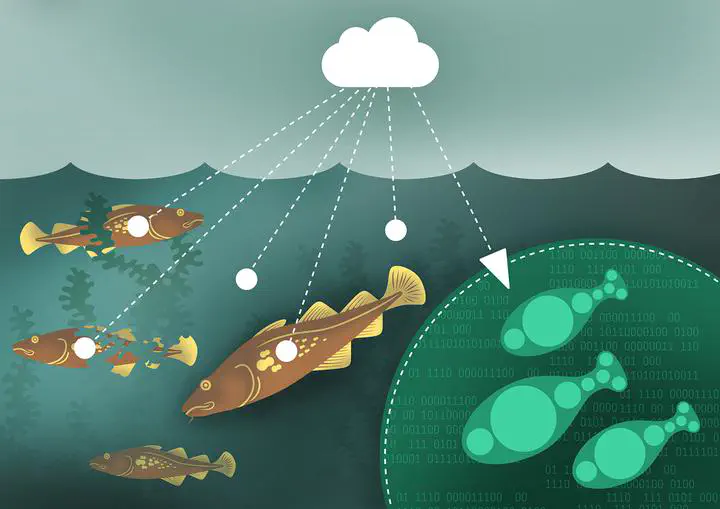A Digital Twin of the Oslo Fjord

The Digital Twin of the Oslo Fjord is a project funded by the Sustainable development initiative of the Faculty of Mathematics and Natural Sciences at UiO 2022-2025 (more info here).
Our main goal is to demonstrate the potential of digital twins to understand the effects of climatic stressors on marine systems, as an instrument to monitor these climatic stressors in near real time, and to explore thresholds in the ecosystem for the effect of climatic stressors through “what-if” experiments using digital twin technology. A digital twin is a modeling framework that integrates real-time sensor data with model-based predictions.
We collaborate with Frisk Oslofjord, a project that collects data from the fjord. Frisk Oslofjord provides real-time and historical data about salinity, temperature, oxygen, plankton, etc. in the Oslo Fjord.
This digital twin will be used in the context of ongoing digital twin activities at UiO and the dScience center. The digital twin will ultimately enable semantic analysis and, building on that, data visualization by oceanographers and other interested members of the public.
System Architecture
The digital twin architecture is currently being developed using SMOL, a language developed at UiO specifically for digital twins. SMOL integrates simulators of physical systems with semantic web technologies and time-series databases. The system architecture will be released as open source.
What-If Scenarios for Ecosystem Stressors
Our aim to use the Digital Twin of the Oslo Fjord as a laboratory to explore hypothetical “what-if” experiments, describing scenarios that capture human and climatic stressors on the ecosystems of the fjord. The twin combines physical and biological models of the fjord and its ecosystems. Experts in computer scientists, marine biology, oceanography and physics to capture both the physical and biological effects of such stressors. As an example of ongoing research, we study the effect of extreme weather events on the circulation model of the fjord.
The Digital Twin of the Oslo Fjord is also part of the project Coastal Ecosystems Dynamics Under Anthropogenic Pressures, which aims to improve marine sustainability and our understanding of the dynamics in the coastal zone where land and open sea meet.
Master students involved in the Oslo Fjord Digital Twin project:
- André Finstad
- Vebjørn Olsen Leihne
- Janaaththan Muthiah Manokaran
- Mariann Løtvedt
- Sander Sigmundstad
- Ingvild Emilie Øvsthus
Researchers involved in the Oslo Fjord Digital Twin project
- Einar Broch Johnsen (computer science, Dept. of Informatics, UiO)
- Nils Chr Stenseth (marine ecology, Dept. of Biosciences, UiO)
- Alexander Eiler (marine ecology, Dept. of Biosciences, UiO)
- Atle Jensen (fluid mechanics, Dept. of Mathematics, UiO)
- Kai Håkon Christensen (oceanography, Norwegian Meteorological Institute)
- Jean Rabault (oceanography, Norwegian Meteorological Institute)
- Sissel Jentoft (marine ecology, Dept. of Biosciences, UiO)
- Eduard Kamburjan (computer science, Dept. of Informatics, UiO)
- Andrea Pferscher (computer science, Dept. of Informatics, UiO)
- Rudolf Schlatte (computer science, Dept. of Informatics, UiO)
- Lars Willas Dreyer (fluid mechanics, Dept. of Mathematics, UiO)
- Riccardo Sieve (computer science, Dept. of Informatics, UiO)
- Laura Ann Slaughter (dScience Center, UiO)
- Silvia Lizeth Tapia Tarifa (computer science, Dept. of Informatics, UiO)

